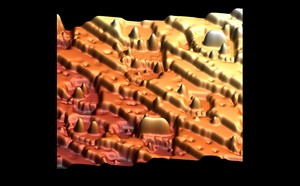
It isn’t magnetic monopoles yet, but we’re getting there.
IBM scientists have developed a powerful new technique for exploring and controlling magnetism at its fundamental atomic level. The new method promises to be an important tool in the quest not only to understand the operation of future computer circuit and data-storage elements as they shrink toward atomic dimensions, but also to lay the foundation for new materials and computing devices that leverage atom-scale magnetic phenomena.
The new method, called spin-excitation spectroscopy, uses IBM’s special low-temperature scanning tunneling microscope designed for use with a broad range of magnetic fields up to 140,000 times stronger than the earth’s. The researchers first move atoms into position and then measure the interactions between their atomic spins, which are the fundamental sources of magnetism.















Awesome! Instead of thumb drives we will have something like a big Cray installed in a tooth or something.